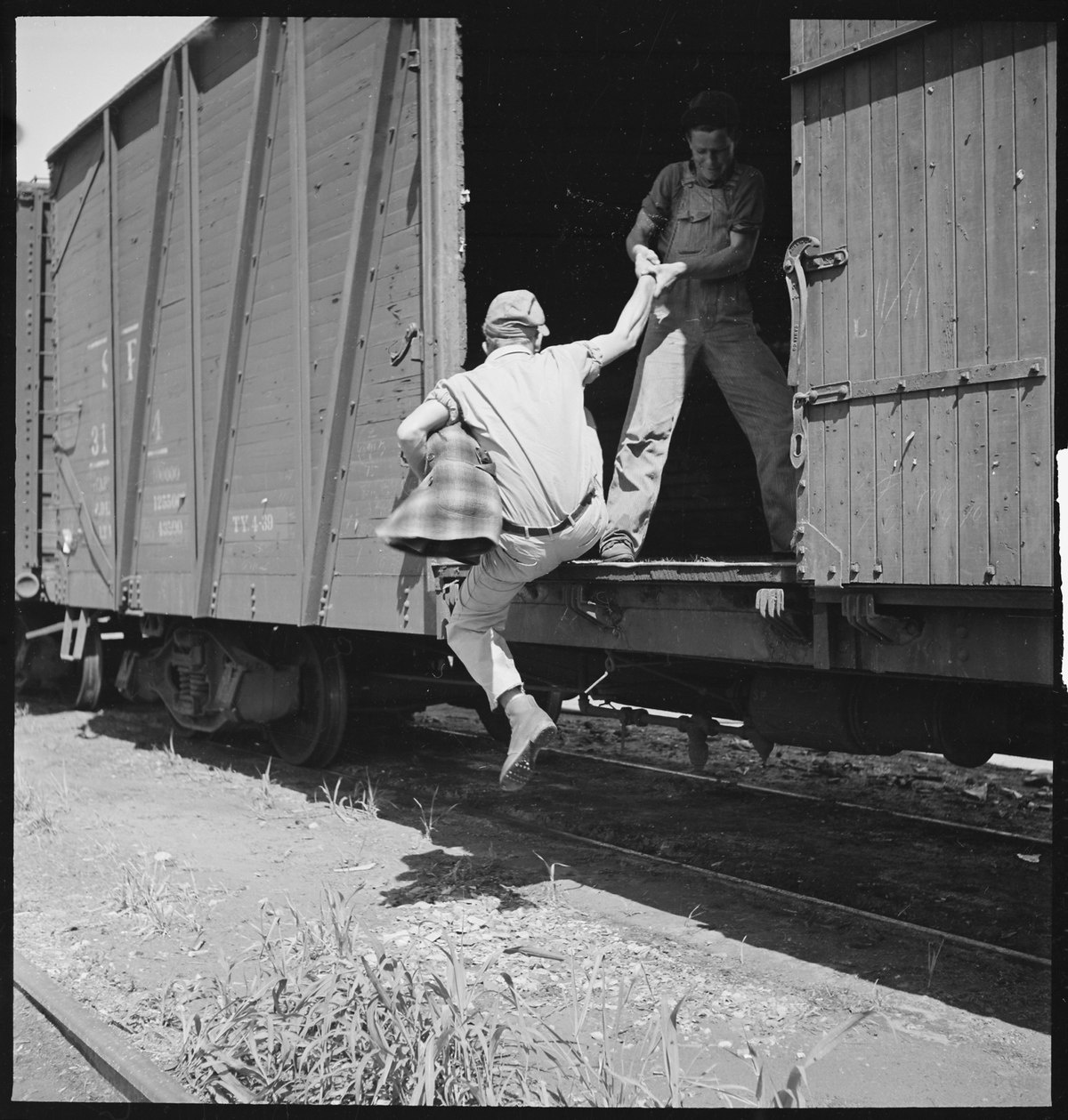The crash of the stock market and the following Depression hit many Americans hard. Schools closed, workers were laid off, and social stability crumbled. While more and more Americans became hoboes, they still continued to hold on to the promise of the American Dream, and were ready to travel hundreds of miles to reach it. Trains crisscrossing the country presented the perfect opportunity for transients as a means of reaching that Dream.
While train hopping existed before the Depression, the reasons and number of people hopping changed drastically; over 50% of train hoppers were men in their forties during 1927, but by ‘33, 75% were people under 25 years of age, with 250,000 youth between 15 and 25 riding the rails for many schools have closed and children had to leave the house in search of work. Train riding provided a stable and scheduled means of transportation to find work across the country, with hoboes migrating from California to the South as harvest seasons changed throughout the year. However with the dropping prices of the Depression and the Dust Bowl, many train hoppers made their way West to California to find work.

Riding the rails formed its own special society of hobos. Common places for transients to ride freight trains were on top or inside open boxcars, or in the “blinds” of passenger trains, which are the spaces between wagons. Finding a place to stay was a constant worry, with many hobo camps called “jungles” forming on the outskirts of towns, with many hobos leaving their shacks and mirrors at the jungles for the next passing hobo to use. The Salvation Army often provided hobos with meals several times a day.
Of course, hopping trains was illegal. There was a possibility of arrest by “bulls” or guards that were found at the train yards, so many train hoppers had to run and jump on the train as it was picking up speed outside of the yard. Many lost their legs and lives if they tripped when boarding or hopping off the train. Other hazards included being thrown off trains during sudden turns, or suffocating from coal dust in train tunnels when riding in an open boxcar. Assaults were commonplace on the trains, so many hobos rode in groups or with partners and few women hopped trains (if they did, they disguised themselves as men for safety reasons).
In 1933, Warner Brothers released a film titled “Wild Boys of the Road” in order to discourage young people from riding the rails, portraying the dangers of train hopping in all their glory and having the opposite effect than the one the film was intended for, encouraging many to try riding the rails. Train hopping hobos were not the hobos we think of today: hobos like Louis l’Amour, H.L Hunt, and William O.Douglas, would live on to become a famous novelist, oil billionaire, and supreme court justice, respectfully. For Americans during the Depression, train tracks proved to be the way of achieving the American Dream.
Sources:
https://livinghistoryfarm.org/farminginthe30s/water_07.html
https://www.encyclopedia.com/education/news-and-education-magazines/riding-rails-1929-1941
http://78.media.tumblr.com/972c7570fed50e896fb1b68a8fb4a1a0/tumblr_n6ob9lzOAO1qg2xvoo1_1280.jpg
https://upload.wikimedia.org/wikipedia/commons/thumb/4/4e/Bakersfield%2C_California._On_the_Freights._Helping_a_newcomer_hop_a_freight_-_NARA_-_532069.tif/lossy-page1-1200px-Bakersfield%2C_California._On_the_Freights._Helping_a_newcomer_hop_a_freight_-_NARA_-_532069.tif.jpg
https://images-na.ssl-images-amazon.com/images/I/71TQ7k5YmlL._SY679_.jpg
I found your blog post very interesting! I especially liked reading about how the film "Wild Boys on the Road" ended up advertising train hopping when its original intent was to discourage it. After 1933, I found that train hopping became much more popular to the point in which brakemen of the trains gave up in trying to get homeless people off their trains. According to Walter Ballard, a homeless man during the Depression, the brakeman hollered "All aboard!" to the massive crowds of homeless people.
ReplyDeletehttps://livinghistoryfarm.org/farminginthe30s/water_07.html